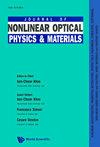放电过程中锌-空气原细胞的原位x射线计算机断层扫描:放电率与阳极形态的关系
IF 2.9
4区 物理与天体物理
Q2 OPTICS
引用次数: 3
摘要
锌空气电池作为一种安全的电池替代品,具有较高的理论能量密度和丰富的组成材料,已经引起了人们的广泛关注。然而,其广泛采用的障碍包括需要提高其循环寿命,以及稳定性和避免降解机制,如锌枝晶生长和产氢副反应。x射线计算机断层扫描(CT)是一种广泛应用于电池研究的技术。原位/操作x射线CT越来越多地用于研究锌-空气电池的锌阳极,以评估锌(Zn)与氧化锌(ZnO)在放电(反之亦然)反应过程中发生的有趣形态变化。然而,已经使用同步加速器x射线源进行了几项研究,这些研究对用户的可用性有限。在这项工作中,我们使用基于实验室的x射线源进行原位x射线CT测量,对商业初级锌空气电池的放电进行了全面研究。研究了四种不同的放电速率(C/30、C/60、C/90和C/150),并在每次放电的不同阶段收集了层析成像。结果证实,随着C-率的降低(即放电电流的减小),锌的反应体积更大,C/30、C/60、C/90和C/150的平均质量利用率分别为17%、76%、81%和87%。此外,使用x射线CT数据集进行的定量分析表明,电池中锌的剩余体积与电池的电荷状态之间存在直接相关性,而在较长的c -速率下,锌的电荷状态偏离了线性。最后,讨论了一种可能的形状变化新机制,其中锌颗粒被类似体积的孔取代。通过对每个c率进行多次重复,不仅可以提高统计相关性,还可以将本文的结果用于电池性能建模,以及考虑未来的阳极设计概念。本文章由计算机程序翻译,如有差异,请以英文原文为准。
In situ x-ray computed tomography of zinc–air primary cells during discharge: correlating discharge rate to anode morphology
Zinc–air batteries have gained significant attention as safe battery alternatives, with high theoretical energy densities and a high abundance of their constituent materials. However, barriers to their widespread adoption include the need to improve their cycling lifetime, as well as stability and avoiding degradation mechanisms such as zinc dendrite growth and hydrogen-producing side reactions. X-ray computed tomography (CT) is a widely used technique for the study of batteries. In situ / operando x-ray CT has been increasingly used to study the zinc anode of zinc–air batteries to evaluate the interesting morphological changes occurring during the reaction from zinc (Zn) to zinc oxide (ZnO) during discharge (vice versa during charge). However, several studies have been carried out using synchrotron x-ray sources, which have limited availability for users. In this work, we present a comprehensive study of the discharge of commercial, primary zinc–air batteries using a laboratory-based x-ray source for in situ x-ray CT measurements. Four different discharge rates are investigated (C/30, C/60, C/90 and C/150), with tomograms collected at various stages throughout each discharge. Results confirm that with decreasing C-rate (i.e. decreasing discharge current) a greater volume of zinc is reacted, with average mass utilisations of 17%, 76%, 81% and 87% for C/30, C/60, C/90 and C/150, respectively. Furthermore, quantification using x-ray CT datasets showed that there is a direct correlation between the volume of zinc remaining in the cell and the state-of-charge of the cell, which deviated from linearity for the longer C-rates. Finally, a potential new mechanism for shape change is discussed, where a Zn particle is replaced with a pore of a similar volume. As well as improvements in statistical relevance gained from multiple repeats for each C-rate, the results presented here could be used in both modelling of battery performance, as well as consideration for future anode design concepts.
求助全文
通过发布文献求助,成功后即可免费获取论文全文。
去求助
来源期刊
CiteScore
3.00
自引率
48.10%
发文量
53
审稿时长
3 months
期刊介绍:
This journal is devoted to the rapidly advancing research and development in the field of nonlinear interactions of light with matter. Topics of interest include, but are not limited to, nonlinear optical materials, metamaterials and plasmonics, nano-photonic structures, stimulated scatterings, harmonic generations, wave mixing, real time holography, guided waves and solitons, bistabilities, instabilities and nonlinear dynamics, and their applications in laser and coherent lightwave amplification, guiding, switching, modulation, communication and information processing. Original papers, comprehensive reviews and rapid communications reporting original theories and observations are sought for in these and related areas. This journal will also publish proceedings of important international meetings and workshops. It is intended for graduate students, scientists and researchers in academic, industrial and government research institutions.

 求助内容:
求助内容: 应助结果提醒方式:
应助结果提醒方式:


